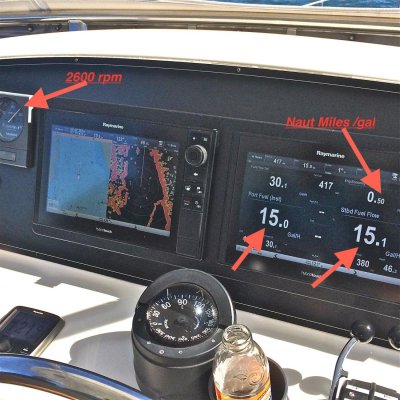My 34AT (displacement 18,700 dry) at 8knots (Cummins QSB 5.9 rated as 380HP) 1400 RPM, 2.1gph If I drop down to 7.5 knots it will be about 1.6 gph. These are figures from the factory sea trial. At 17 knots, 3000 RPM, 18.1 gph. For sea trials, the factory specifies 1/2 load of water (75gal), fuel 1/2 load (200 gallons) and the 12 volt fridge is on and running.
May I suggest you find a users group for the make and model of your boat and see what info they can provide. Someone might be able to provide you the graph, RPM/speed/gph. Realize, those are "walking around figures" depending on how much you personal stuff you put onboard. Plus, sea state, current and I suspect a few more variables. # and weight of people on board too.
Conclusion: there are many variables involved. And that will result in a "best guess".
If the boat has an accurate/believable flow scan, you can generate your own chart.




